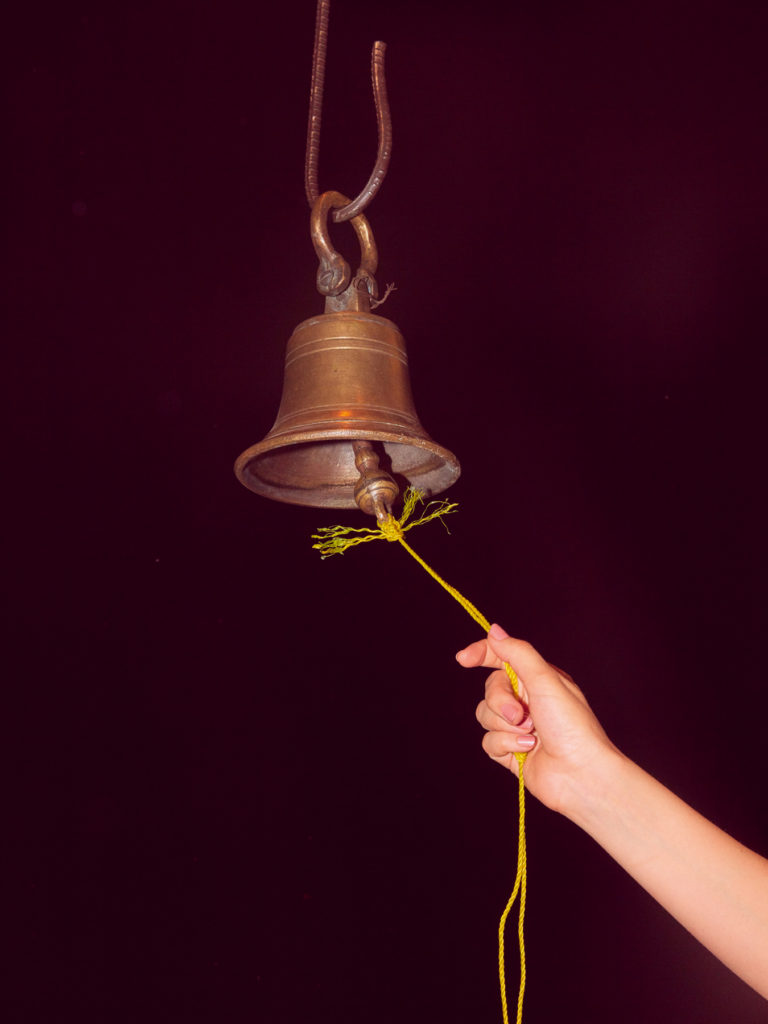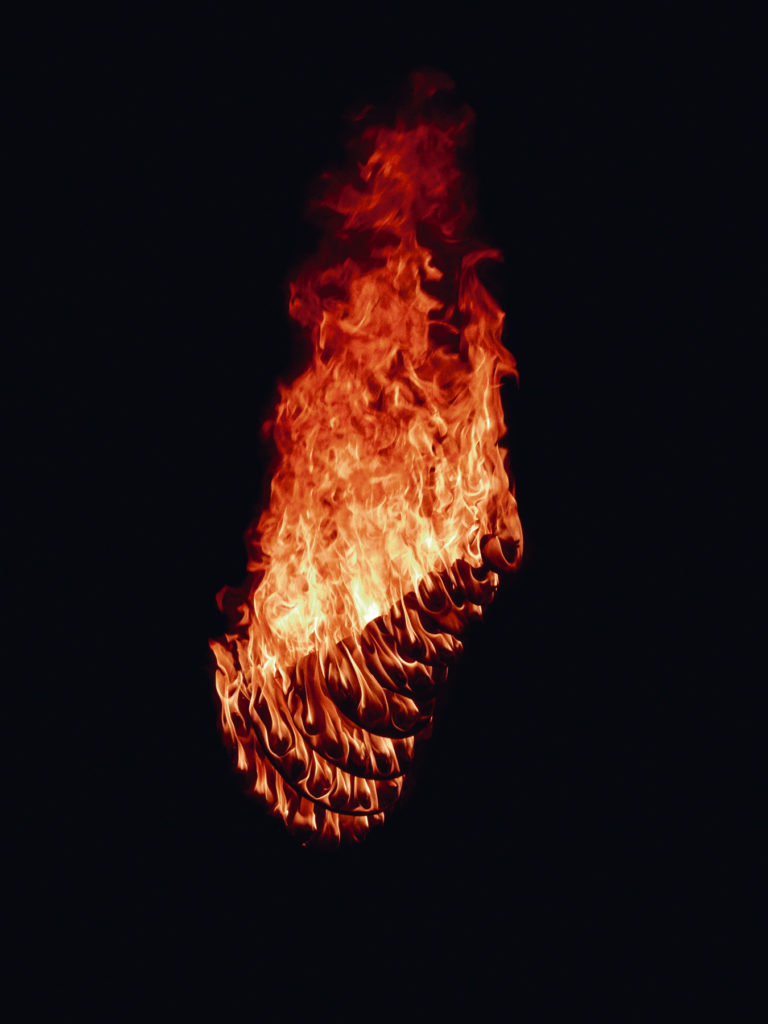Balarama Heller, No Destination but Eternity, 2019
At the center of any spiritual life lie clarity, simplicity, and devotion. We may see and hear the members of, say, the Hare Krishna movement parading through our streets in a jangle of bells and dance, and that seems a vibrant expression of their gratitude, their sense of community, the love they share. But at the heart of every individual life is what happens in silence and solitude, when nobody else is around and one can focus so undistractedly on a single point that the world explodes into color.
Every time I look at Balarama Heller’s work from his 2019 series Sacred Place, I’m pierced by something as haunting as a single plucked note in the dark. It’s as if he’s freed the inner life of all its clutter and discovered the one pure detail that can carry the spirit into a clearer, more elevated world.
I’m also, of course, intrigued by the artist’s name, which I don’t know where to place; it’s as universal in its way as the lamp, the fire, the boat, the joined arms he gives us in these portraits of what I take to be radiant simplicity. Heller, I gather, grew up across the United States in the 1980s, as part of the Hare Krishna movement, a blue-eyed American boy bearing an exotic foreign name and raised among the parallel realities of the counterculture. While his contemporaries were growing fluent in TV and the NFL, he was coming of age in the thick of collective devotion, with all its trials (and its stubborn sense of something better).

Days before he was born, his young mother fled a commune in a Volkswagen bus, not knowing how to drive. One of his ex-stepfathers served time in prison for robbing seven banks, another as an accomplice to murder. Balarama arrived in elementary school with a shaven head and a determination to change his first name (for a while) to Paul. Yet one result of this itinerant life is that this white-skinned American who was raised within Hinduism can find something in an Indian place of worship that someone like myself, born of two Hindu parents from India, with an Italian first name and little knowledge of the culture and customs of my forebears, might never see.
On Heller’s second trip to Vrndavana, a place of pilgrimage for the Hare Krishna movement southeast of Delhi—by now he’d left the faith himself—what he caught was not the particulars of one tradition but the tonalities, the shadows (the beauty) of them all. This city of temples is a center of worship of the god Krishna, who is said to have grown up there. But what Heller gives us is something much more penetrating and transporting and truer to his own spiritual location now: a portrait of the devotion that lies beyond every name and destination.

Many of his images were taken between three and six o’clock in the morning, when the devout get up to pray because the boundaries between material and spiritual worlds are said to be especially porous; having been trained to access ecstatic trance states through chant, amid elaborate rituals designed to illuminate the divine within everything, this photographer gives us a tree, a foot that seems to glow with the poetry of something beyond. We all find places—in love, in nature, in sleep—where, as Heller quotes Joseph Campbell, “Eternity shines through time.” This work speaks to me of a soul that has broken free of a single doctrine so as to be responsive to one and all.
In Japan, where I live, and where people likewise gravitate toward an undisturbed attention that allows even the smallest detail to open up a universe, they say that poems, texts, and images of the spirit resemble a finger pointing at the moon. I look again at the ladder, the bell, the flames, even the plastic bag that Heller (who was once embedded with a Sufi order in Istanbul) observes with the exquisite care of a classical miniaturist, and I realize: even everyday objects acquire an almost numinous power when seen clearly and alone in the dark. In the quiet rapture Heller passes on to us, at once mysterious and transparent, I see both the finger and the heavenly bodies to which every soul at its most fortunate returns.





Courtesy the artist
This article originally appeared in Aperture, issue 241, “Utopia,” Winter 2020, under the title “Sacred Place.” Read more or subscribe to Aperture and never miss an issue. An online exhibition of Balarama Heller’s Sacred Place will be on view on Artsy through March 10, 2021.



























